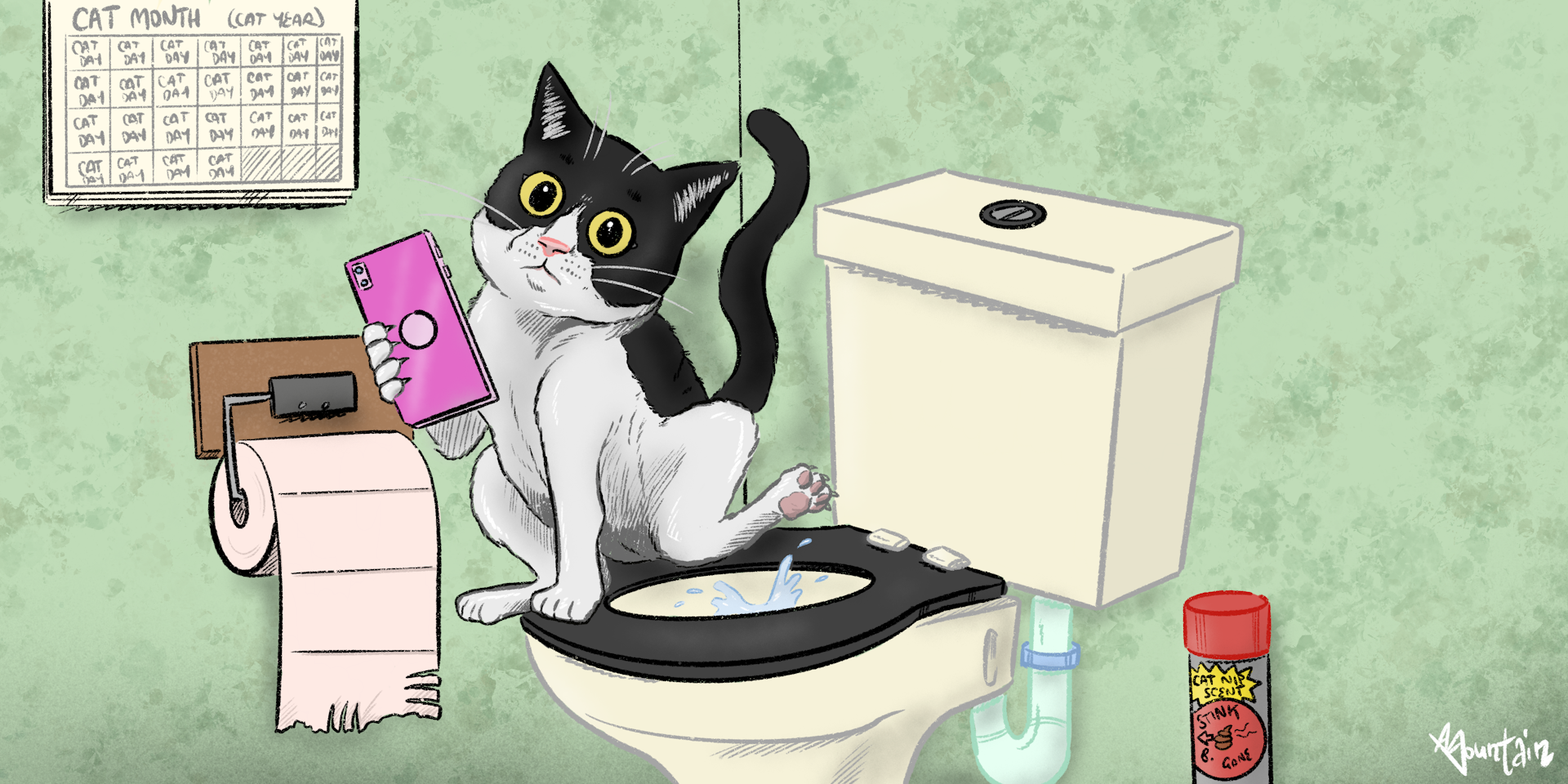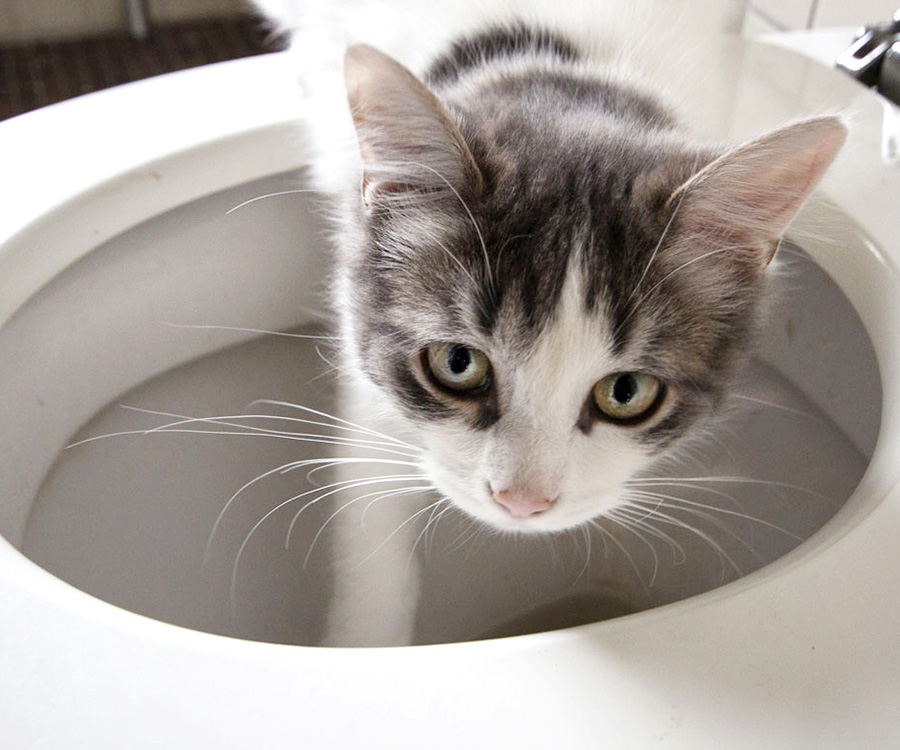Why Flushing Cat Poop Down Your Toilet Isn't a Good Idea - Tips for Safer Handling
Why Flushing Cat Poop Down Your Toilet Isn't a Good Idea - Tips for Safer Handling
Blog Article
Almost everyone may have their private opinion when it comes to Can You Flush Cat Poo or Litter Down the Toilet?.

Introduction
As feline owners, it's necessary to bear in mind how we take care of our feline good friends' waste. While it may appear convenient to purge pet cat poop down the toilet, this method can have damaging consequences for both the environment and human health.
Ecological Impact
Flushing cat poop presents dangerous microorganisms and parasites right into the water supply, presenting a considerable danger to marine ecological communities. These impurities can negatively influence marine life and compromise water quality.
Health and wellness Risks
In addition to environmental issues, purging feline waste can also pose wellness dangers to human beings. Pet cat feces may have Toxoplasma gondii, a parasite that can trigger toxoplasmosis-- a possibly severe disease, particularly for pregnant ladies and people with weakened immune systems.
Alternatives to Flushing
The good news is, there are safer and more liable ways to deal with feline poop. Think about the following alternatives:
1. Scoop and Dispose in Trash
One of the most common technique of dealing with cat poop is to scoop it into a naturally degradable bag and throw it in the trash. Be sure to make use of a devoted clutter scoop and take care of the waste promptly.
2. Usage Biodegradable Litter
Opt for eco-friendly pet cat trash made from materials such as corn or wheat. These clutters are environmentally friendly and can be safely taken care of in the garbage.
3. Hide in the Yard
If you have a lawn, consider burying feline waste in a designated location far from vegetable yards and water resources. Make certain to dig deep sufficient to avoid contamination of groundwater.
4. Install a Pet Waste Disposal System
Purchase an animal waste disposal system especially created for cat waste. These systems make use of enzymes to break down the waste, minimizing odor and environmental influence.
Conclusion
Liable family pet possession expands beyond giving food and shelter-- it also involves appropriate waste management. By refraining from flushing pet cat poop down the bathroom and going with alternative disposal approaches, we can minimize our ecological impact and shield human health and wellness.
Why Can’t I Flush Cat Poop?
It Spreads a Parasite
Cats are frequently infected with a parasite called toxoplasma gondii. The parasite causes an infection called toxoplasmosis. It is usually harmless to cats. The parasite only uses cat poop as a host for its eggs. Otherwise, the cat’s immune system usually keeps the infection at low enough levels to maintain its own health. But it does not stop the develop of eggs. These eggs are tiny and surprisingly tough. They may survive for a year before they begin to grow. But that’s the problem.
Our wastewater system is not designed to deal with toxoplasmosis eggs. Instead, most eggs will flush from your toilet into sewers and wastewater management plants. After the sewage is treated for many other harmful things in it, it is typically released into local rivers, lakes, or oceans. Here, the toxoplasmosis eggs can find new hosts, including starfish, crabs, otters, and many other wildlife. For many, this is a significant risk to their health. Toxoplasmosis can also end up infecting water sources that are important for agriculture, which means our deer, pigs, and sheep can get infected too.
Is There Risk to Humans?
There can be a risk to human life from flushing cat poop down the toilet. If you do so, the parasites from your cat’s poop can end up in shellfish, game animals, or livestock. If this meat is then served raw or undercooked, the people who eat it can get sick.
In fact, according to the CDC, 40 million people in the United States are infected with toxoplasma gondii. They get it from exposure to infected seafood, or from some kind of cat poop contamination, like drinking from a stream that is contaminated or touching anything that has come into contact with cat poop. That includes just cleaning a cat litter box.
Most people who get infected with these parasites will not develop any symptoms. However, for pregnant women or for those with compromised immune systems, the parasite can cause severe health problems.
How to Handle Cat Poop
The best way to handle cat poop is actually to clean the box more often. The eggs that the parasite sheds will not become active until one to five days after the cat poops. That means that if you clean daily, you’re much less likely to come into direct contact with infectious eggs.
That said, always dispose of cat poop in the garbage and not down the toilet. Wash your hands before and after you clean the litter box, and bring the bag of poop right outside to your garbage bins.
https://trenchlesssolutionsusa.com/why-cant-i-flush-cat-poop/

As a passionate reader about Can You Flush Cat Poo or Litter Down the Toilet?, I figured sharing that blog post was smart. Enjoyed reading our article? Please share it. Help somebody else find it. Thanks for going through it.
Schedule Now! Report this page